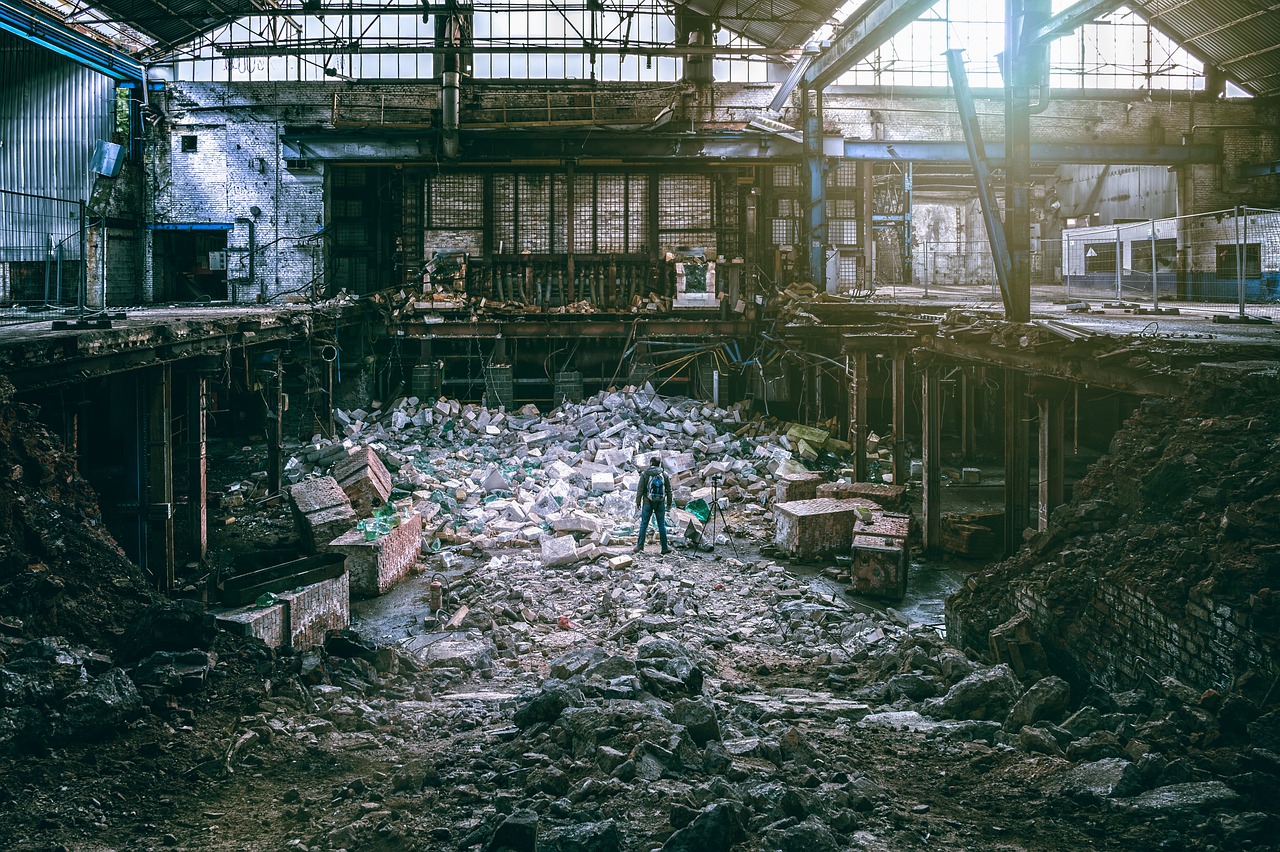How Can Augmented Reality Enhance On-Site Training in Industrial Settings?

From your local grocery store to the bustling manufacturing floor, technology is reshaping how we work and live. One of the most exciting developments of this digital age is augmented reality (AR). Just as the name suggests, augmented reality augments or enhances our real-world environment by overlaying digital information onto it.
In industrial settings, this technology can revolutionize the way your employees receive training, perform maintenance tasks, and ensure their safety. The following sections will delve into how augmented reality can enhance on-site training in industrial settings.
A lire également : How Are Emerging Technologies Impacting Sustainable Urban Waste Management?
Augmented Reality: A New Realm of Interactive Training
Training is a critical component in any workplace, but in industrial settings, it takes on a whole new dimension. Workers have to learn how to operate complex equipment, adhere to strict safety procedures, and keep up with frequent maintenance requirements. Traditional training methods like classroom instruction or on-the-job learning can be time-consuming and not always effective.
Augmented reality offers a solution. It provides an interactive training experience where employees can learn by doing. AR overlays virtual instructions over real equipment, allowing workers to practice tasks in a risk-free, immersive environment. It’s like having an expert guide at their shoulder, walking them through each step.
A lire également : How Can AI and Robotics Transform the Future of Precision Medicine?
Safety First: Augmented Reality for Hazard Awareness and Prevention
The safety of your employees is paramount. Unfortunately, the industrial sector is fraught with hazards, from heavy machinery mishaps to chemical spills. Training staff to recognize and respond to these dangers is vital, but it’s often challenging to replicate real-life situations in a safe, controlled manner.
That’s where augmented reality comes in. AR technology can simulate hazardous scenarios, letting workers get a real sense of the risks without putting them in harm’s way. Moreover, AR can provide real-time safety alerts and instructions, helping workers navigate dangerous situations and reduce the risk of accidents.
Virtual Maintenance: Streamlining Equipment Upkeep with Augmented Reality
Maintenance is an unavoidable fact of life in the manufacturing world. From assembly lines to conveyor belts, keeping everything in working order is an ongoing task. But training for maintenance can be tricky. It’s often hard to visualize the inner workings of a machine or remember the steps for rare, complex repairs.
With augmented reality, you can superimpose digital diagrams and step-by-step instructions over the actual equipment. This means your employees can learn and perform maintenance tasks without having to rely on bulky manuals or distant memories. Plus, remote experts can guide workers through the process, making it easier to solve problems and reduce downtime.
Industrial Learning in the Digital Age: The Role of Augmented Reality
The rapid pace of technological change means that continuous learning is more important than ever. In the industrial sector, this often involves teaching employees about new machines, software, or processes. Traditional training methods can be time-consuming and often fail to cater to different learning styles.
Augmented reality can help overcome these challenges. AR creates an engaging, visual learning experience that can be tailored to individual needs. Whether it’s practicing a new skill, experimenting with a new piece of equipment, or understanding complex concepts, AR makes learning more accessible and enjoyable.
The Remote Reality: Using AR to Connect and Collaborate
In a world where remote work is becoming increasingly common, augmented reality can bridge the physical distance between employees and experts. No longer do you need to fly in a specialist for a rare repair or training session. With AR, experts can provide real-time guidance and support, no matter where they are.
This not only saves time and money, but it also allows for better collaboration. Workers can share their view of the equipment or problem, and the remote expert can overlay instructions or drawings to guide them. It’s a powerful way to leverage expertise and foster teamwork in our increasingly digital world.
In conclusion, augmented reality has the potential to revolutionize on-site training in industrial settings. Whether it’s making learning more interactive, enhancing safety awareness, streamlining maintenance, facilitating continuous learning, or enabling remote collaboration, AR is truly a game-changer in the industrial sector. As the technology continues to evolve, its applications and benefits will only increase, making it an exciting space to watch.
Remember, the future is not something we enter. The future is something we create. And with augmented reality, we have the tools to create a safer, more efficient, and more connected industrial world.
Harnessing Augmented Reality for Skill Development and Enhancement
Skill development and employee training are crucial aspects of any industrial organization. Traditional corporate training methods could be considered outdated and less effective in a rapidly evolving digital world. What if there was a way to upgrade your training methods and make them more interactive and engaging?
Enter augmented reality.
Augmented reality brings an entirely new dimension to reality training. It gives a real-time, immersive, and interactive learning environment where employees can learn and practice their skills. Augmented reality industrial training can be tailored to employees’ individual needs, making learning more accessible and enjoyable.
For instance, smart glasses with AR capabilities can overlay work instructions on the actual equipment, providing an immersive and hands-on learning experience. This allows your employees to learn and perform tasks without having to rely on paper manuals or memory. It’s like having a personal tutor guiding them through each step, in real-time.
In addition, AR technology can simulate complex scenarios that could be hard to replicate using traditional training methods. Whether it’s dealing with a machine malfunction or learning how to prevent a chemical spill, employees can practice their responses in a safe, risk-free environment.
Such immersive learning experiences significantly enhance skill development and retention. Employees are better able to understand and remember what they’ve learned, which can lead to improved performance and productivity.
Prioritizing Workplace Safety with Augmented Reality
Workplace safety is another area where augmented reality can make a significant impact. Industrial settings can be hazardous, with risks ranging from heavy machinery mishaps to chemical spills. Traditional safety training methods can fall short in adequately preparing employees for these risks.
However, augmented reality can simulate these hazardous scenarios in a safe, controlled manner, hence enhancing health safety awareness. Workers can gain a first-hand understanding of the risks without actually being put in danger.
For instance, using AR safety training, employees can learn how to respond to a chemical spill by actually ‘experiencing’ it – without the actual risk. They can see what the spill looks like, understand how it spreads, and practice containment procedures.
Beyond simulations, augmented reality can also provide real-time safety alerts, instructions, and guidance. If an employee is performing a potentially dangerous task, AR can provide real-time guidance to ensure they’re doing it safely.
In essence, augmented reality can significantly boost workplace safety by providing immersive safety training and real-time guidance. Not only does this make the workplace safer, but it also gives employees the confidence to perform their tasks knowing they’re well-prepared to handle any risks.
Conclusion: Embracing the Future of Industrial Training with Augmented Reality
It’s clear that augmented reality has the potential to revolutionize industrial training. From enhancing skill development to boosting safety awareness, AR can make training more effective, engaging, and fun. Furthermore, it can save time and resources by offering remote assistance and enabling better collaboration.
As we step into the future, augmented reality is rapidly transitioning from being a novel tech gimmick to a critical tool for corporate training and workplace safety. Organizations that embrace this reality technology will find themselves better equipped to deal with the challenges of the digital work era.
Indeed, industrial settings are becoming increasingly complex, and the need for effective and efficient training methods is more critical than ever. Embracing augmented reality is no longer just an option but a necessity. It’s time for industries to step up their game and adapt to this future. Remember, the future of industrial training lies in augmented reality.
